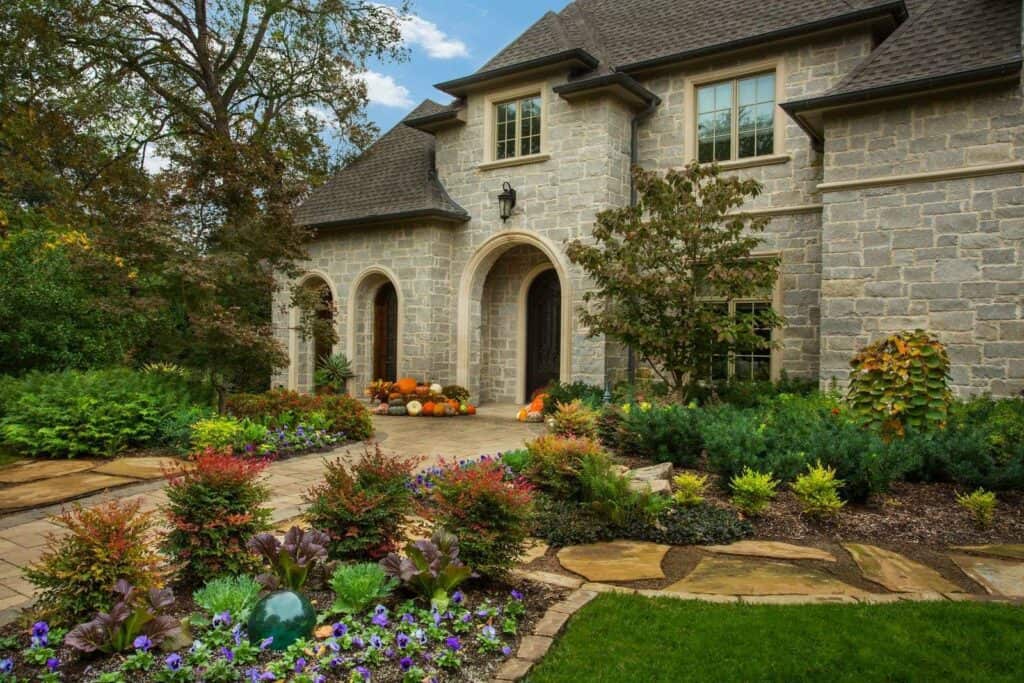Landscape Design Fundamentals Explained
Landscape Design Fundamentals Explained
Blog Article
The Facts About Landscape Design Revealed
Table of ContentsSome Known Questions About Landscape Design.Unknown Facts About Landscape DesignThe Definitive Guide to Landscape Design4 Easy Facts About Landscape Design Explained
When creating a household landscape, one of the most important action is to put a plan on paper. Creating a master strategy will save you time and cash and is most likely to cause an effective style. Landscape Design. A plan of attack is developed with the 'style procedure': a step-by-step technique that considers the environmental conditions, your desires, and the components and concepts of layoutThe five steps of the style procedure consist of: 1) performing a website supply and evaluation, 2) determining your requirements, 3) producing functional representations, 4) establishing theoretical style strategies, and 5) attracting a last style plan. The first 3 steps develop the aesthetic, functional, and horticultural needs for the style. The last two steps after that apply those requirements to the creation of the final landscape plan.
This is a crucial step for both plant choice and placement and locating household tasks and functions. It is necessary since the exact same environment problems that impact the plantstemperature, moisture, rain, wind, and sunlightalso impact you, the user. The next step is to make a listing of your requirements and desiresthis helps you determine how your yard and landscape will be utilized.
The practical layout is then used to locate the activity rooms on the site and from this layout a theoretical plan is developed - Landscape Design. The last action is a last layout that includes all the hardscape and growing information that are essential for installment. Throughout the design procedure there are ten essential points to think about: for plant option and task place by considering what you want and need to assist determine forms and arrange rooms by designating task areas and connecting with aspects for both the atmosphere and the individual by making use of massing and layering methods such as shift areas and focal factors in the materials, the colors, and the surface area appearances for the development and upkeep of plants by utilizing lasting layout practices An extensive supply and analysis of the website is necessary to determine the environmental conditions for plant development and the very best usage of the site
The 7-Minute Rule for Landscape Design
It is always best to use plants that will certainly grow in the existing dirt. Where plants grow well, note the dirt problems and utilize plants with similar growing demands.

Sun/shade patterns, the amount and length of direct exposure to sunlight or color (Figure 1), produce microclimates (occasionally called microhabitats). Recording website conditions and existing plants on a base map will certainly expose the place of microclimates in the yard. Plants generally come under one or 2 of four microclimate categories-full sun, partial color, color, and deep shade.
Number 1. Sun and color patterns. Credit Report: Gail Hansen, UF/IFAS It is important to note all the present problems on a precise base map when doing the site supply (Figure 2). Landscape Design. Energies such as power lines, septic storage tanks, underground utilities and roofing system overhangs figure out plant location. Make use of a property surveyor's plat of your building for the borders and area of your home.
How Landscape Design can Save You Time, Stress, and Money.
Budget problems include the materials, preliminary setup prices and the on-going maintenance costs. Identify the time and cash you want to take into keeping the plants and hardscape-be sensible about your objectives and ability. Figure 3. Present use locations. Debt: Gail Hansen, UF/IFAS Number 4. Proposed use locations. Credit History: Gail Hansen, UF/IFAS There are several landscape style motifs- visit this site from simple to facility, however it is valuable to select one to assist your plant and product selection.

Choose if you wish to open your lawn, shut your backyard, or a little of both, to these sights. Simply put, do you want the garden to enclose the area around you and relate mainly to the residence, or do you want the garden to open sights and look external, connecting to the environments? This will certainly provide you a beginning factor to consider a style.
The Basic Principles Of Landscape Design

Every garden must have a type motif, but not all yards have a design theme. Lots of property gardens have no certain design except to mix with the residence by repeating details from the design such as products, color, and form.
In a kind motif the organization and form of the rooms in the lawn is based either on the form of the home, the form of the locations between your home and the home borders, or a favorite shape of the home owner. The kind theme determines the form and company (the format) of the spaces and the links between them.

Report this page